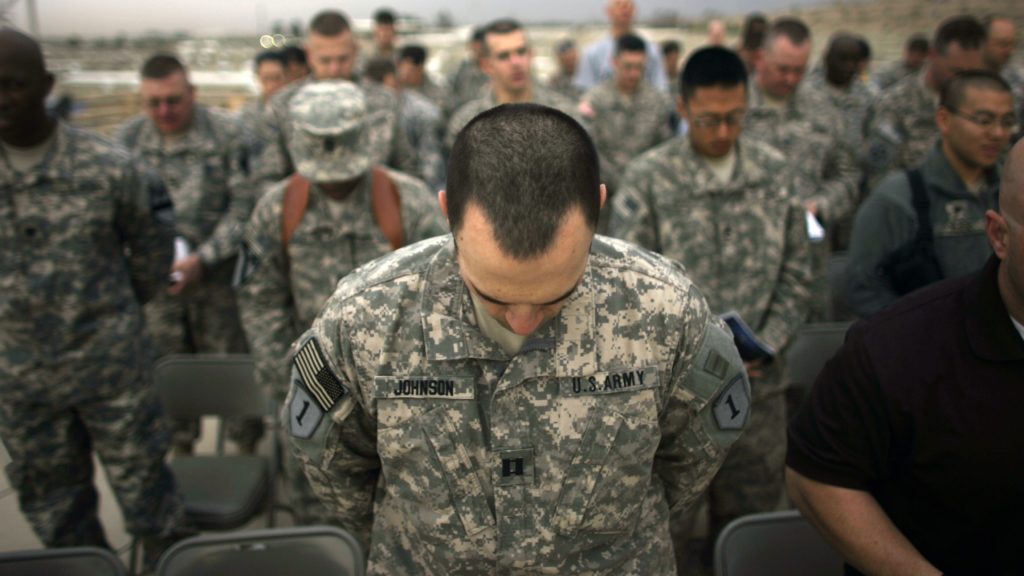Summer 2022
Spiritual Readiness: The Missing Link of the H2F Program?

When the term spiritual is brought up, it’s often associated with a connection to a higher power. But that is only part of the definition in the eyes of the Army. They see spirituality as an individual’s connection to purpose, service and sacrifice for the greater good, as well as a personal connection to a higher power.
It’s also thought to be the ability to endure and overcome high times of stress, high grief, and tragedy by making meaning of life experiences.
Spiritual Readiness is just one domain of the Army’s five-domain approach to investing in the overall human performance of its soldiers. Physical Readiness, Mental Readiness, Nutritional Readiness, Sleep Readiness, and Spiritual Readiness make up the Holistic Health & Fitness (H2F) program — its primary investment in soldier readiness and lethality, optimal physical and non-physical performance, reduced injury rates, improved rehabilitation after injury, and increased overall effectiveness of the Total Army.
“This is not the Chaplain Corps bringing spirituality, because spirituality already exists,” Maj. Gen. Thomas Solhjem, US Army chief of chaplains, said. “We are in a supporting role. We are an enabler.”
And while there are plenty of ways to tangibly quantify the other four domains in some way, defining spiritual readiness can be more difficult. Spartabase, in conjunction with the military, is working to solve that problem.
“It’s an important piece of the puzzle, and probably the least understood,” Dan Duffield, sports science consultant for Spartabase, said. “I’ve spoken to several chaplains who all agree with that statement.”
“Nobody is immune from trauma, none of us are,” Solhjem said. “What research shows us is that, in trauma, you are either growing or not. Even the best of us, spiritually, is going to reach a peak if the stress is that severe where we are going to need the agency of other people. We often perceive it as a sign of weakness to ask for help. It is not. Sometimes our Soldiers and our families need somebody to lock arms with and say, ‘I’m going to help you.’”
The way Duffield likes to explain the Army’s H2F pillars is through the metaphor of an airplane. There are five main components of an airplane that are all necessary to ensure the safe function of the flight — the engine, the fuel, the cooling system, the electrical system, and the window. The engine is the Physical Domain, necessary for having the drive to get through missions. The fuel is the Nutrition Domain, needed if the engine of a soldier is to run properly. The cooling system is the Sleep Domain because if there’s no recovery process the engine will fail. The electrical system is the Mental Domain because the brain controls the functionality of the previous domains.
That leaves the window for the Spiritual Domain — how a soldier interprets and perceives their surroundings.
“When Spiritual Readiness is high, the window is clear and visibility is high. We can see our surroundings and see where we’re going. We can see any obstacles in our way. What happens when it gets a little blurry? When Spiritual Readiness starts to decrease what happens is the window gets blurry, but you can still see out of it and push in the general direction you want to go. Again, we’re not performing as well as we could in this domain,” Duffield said. “We want to go to a place where we’re meeting people with the blurry window, but often what happens is we get them when they’re here — the window is dark, cracked, and can’t be seen out of. That’s when people are suffering from depression, abusing substances, and the worst case is suicide. What we’re trying to impact in the spiritual domain is to keep them out of this window and, ultimately out of the blurry window and have a clear vision in front of them.”
» ALSO SEE: Effective Tactical Sleep Strategies
The hardships soldiers face are extremely perilous, and for a soldier to have truly enduring resiliency, they need to build a strong spiritual core. Soldiers work with their unit ministry team to find extra guidance and create a personalized spiritual development plan. A few suggestions on how soldiers can work on building their spiritual readiness are attending meetings with people of similar values, participating in charity work, journaling, meditating, and praying.
“The soldier’s heart, the soldier’s spirit, the soldier’s soul, are everything,” said Lt. Col. Paul Fritts during an H2F Training and Doctrine Command’s Center for Initial Military Training. “Unless the soldier’s soul sustains him, he cannot be relied on and will fail himself and his commander and his country in the end.”



